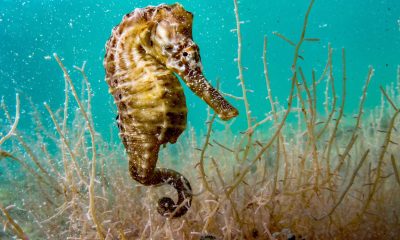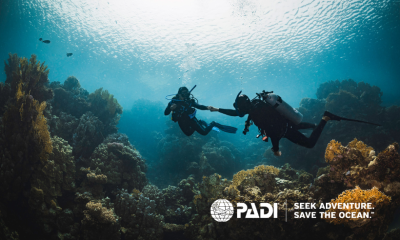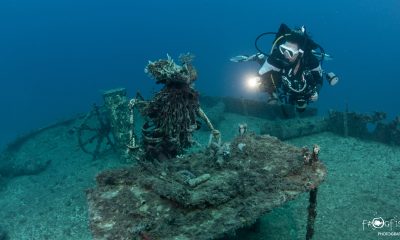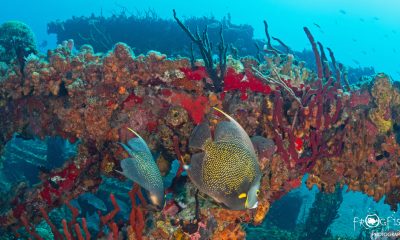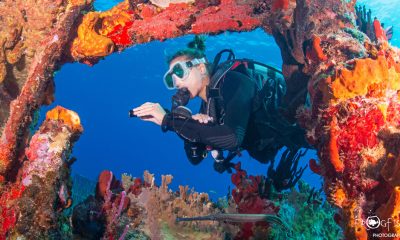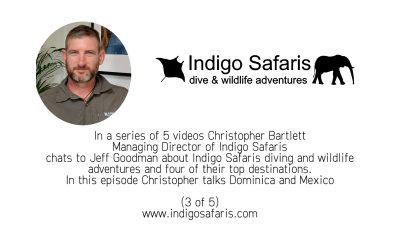Blogs
Photographing the Hammerhead Sharks of Bimini, Bahamas (Watch Video)
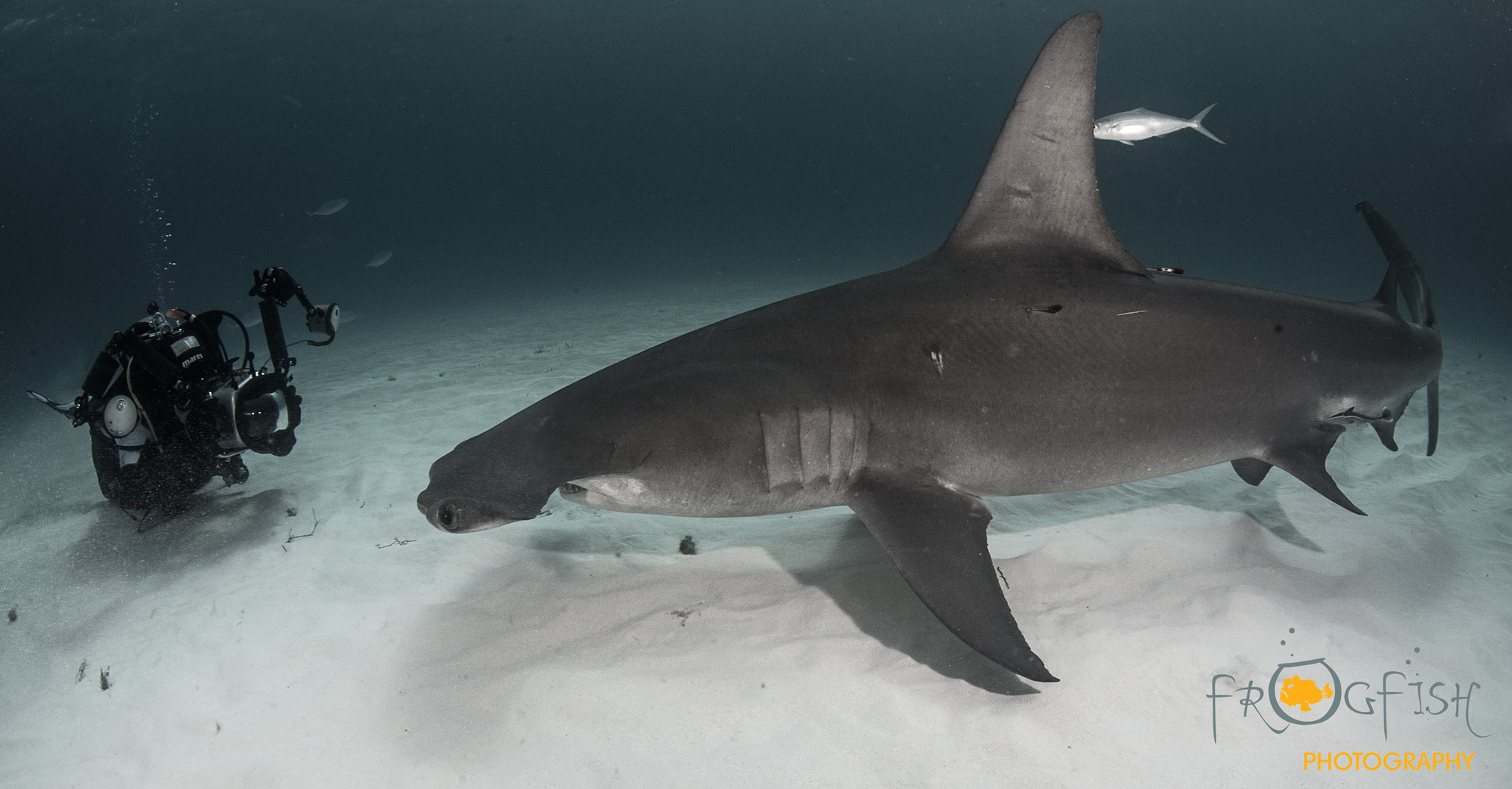
If you want to get up close and personal to photograph Great Hammerhead sharks then Bimini, in the Bahamas, is the place for you. Every winter, Great Hammerhead Sharks frequent the shallow clear waters around these tiny islands and divers flock to see them. The conditions are usually perfect for underwater photographers, as the dives are in shallow water (7-10m), giving plenty of natural light to work with. The water is warm and the visibility great, so you can stay underwater for long dives to maximise your photographic opportunities. The sharks come in very close, attracted by fish in a metal bait box, so you can use a wide angle or a fish-eye lens to get dramatic shots.
We always dive with Neal Watson when we head to Bimini. Throughout the season, which runs from December to April, you can do a 2 tank dive each morning and experience something very special. Your two guides will get into the water first and get the bait set-up in the correct position depending on any current. We have never had to wait long for the first shark to turn up and you can see them swimming over the sandy sea bed from the boat as you gear up. The Great Hammerhead Shark can grow to over 5m in length and are impressive at the best of times, but when you have one swim right over your head, it is something to behold.
 As you kneel on the seabed the sharks will follow the scent up current and make their way to your location. There are usually around 8 divers in the water, positioned in a line with the bait and guide in the middle. The sharks swim slowly past on their way to and from the bait box and seem to take it in turns, making this dive a photographic treat. It is not at all chaotic, like some shark-baiting dives, giving you time to compose your shots (once you have got over the initial excitement). Our record is 8 individual Great Hammerhead Sharks on a single dive.
As you kneel on the seabed the sharks will follow the scent up current and make their way to your location. There are usually around 8 divers in the water, positioned in a line with the bait and guide in the middle. The sharks swim slowly past on their way to and from the bait box and seem to take it in turns, making this dive a photographic treat. It is not at all chaotic, like some shark-baiting dives, giving you time to compose your shots (once you have got over the initial excitement). Our record is 8 individual Great Hammerhead Sharks on a single dive.
While you are visiting Bimini, make sure you visit the Bimini Shark Lab, where you can get a tour to see the amazing work they do here to gain a better understanding of sharks and the ways we can help conserve them and their environment. Watch the bull sharks cruise around the harbour at Bimini Big Game Club. Head out to swim with Atlantic Spotted Dolphins. For such a tiny island, there is plenty to keep an ocean lover and photographer entertained!
This is a perfect stop on a multi-island tour of the Bahamas. If you want to photograph sharks, then these islands have a huge amount to offer. Watch out for next articles about photographing Caribbean Reef Sharks in Nassau and Lemon Sharks in Grand Bahama.
Tips for Great Hammerhead Shark photography
- Try to position yourself so that you are not shooting directly into the bright sun.
- Try to avoid the sand stirred-up by both divers and nurse sharks in your shots.
- The most striking thing about a hammerhead, obviously, is the shape of its head and the position of their eyes, so try to get shots from different angles to show this feature off. From above looking down on the sand; at eye level up close, or as it swims over you.
- By conserving your air consumption, you can stay longer and have the dive to yourself and your buddy, later on!
- Remember to enjoy it! Put your camera aside every now and then so that you can take it the beauty of these incredible apex predators.
Video Clips
Further Information
For more from Nick and Caroline, visit www.frogfishphotography.com.
Blogs
BVI Wreck Week – Diving (Part 3)

![]() BVI Wreck Week allowed us to dive several of the wrecks the BVI has to offer, as well as sampling some of the best reef sites too. Our previous blog focused on the wreck of the RMS Rhone, so in this one we will try to give you a taste of the rest of the diving on offer.
BVI Wreck Week allowed us to dive several of the wrecks the BVI has to offer, as well as sampling some of the best reef sites too. Our previous blog focused on the wreck of the RMS Rhone, so in this one we will try to give you a taste of the rest of the diving on offer.
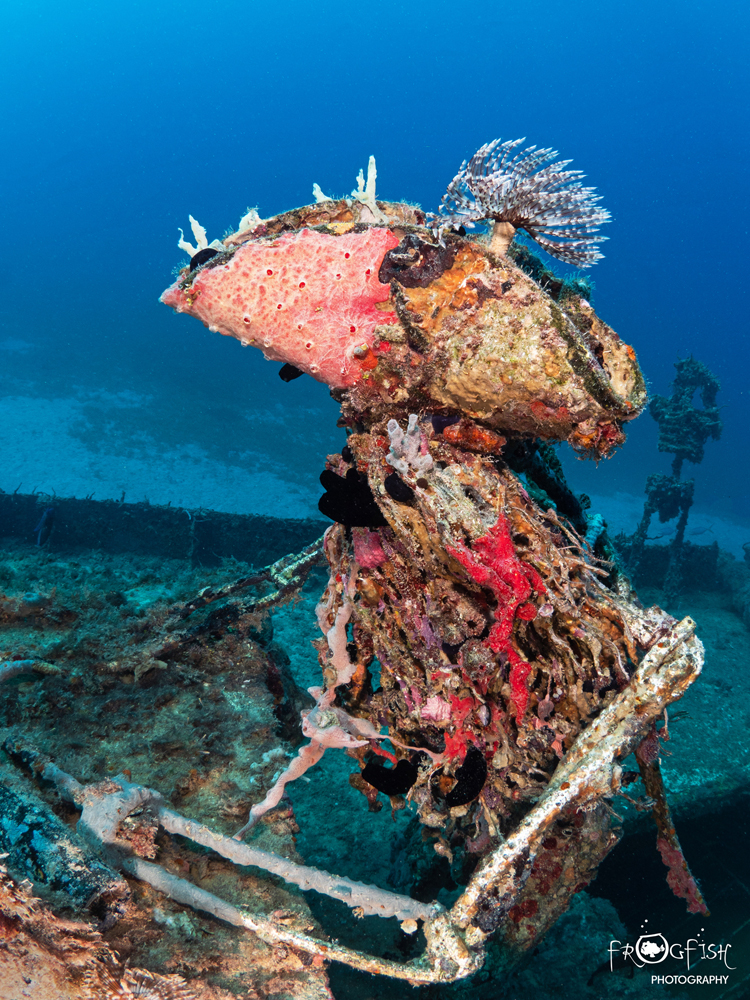
And there is a great deal of wonderful diving to tell you about. Our first day of diving did not offer the best visibility due to heavy rain earlier in the week. However, we were taken to a rugged dive site that had Caribbean and Lemon Sharks swimming all around us. If we had been able to see the usual 20m+ I am sure we would have been able to talk of dozens of sharks on the site.
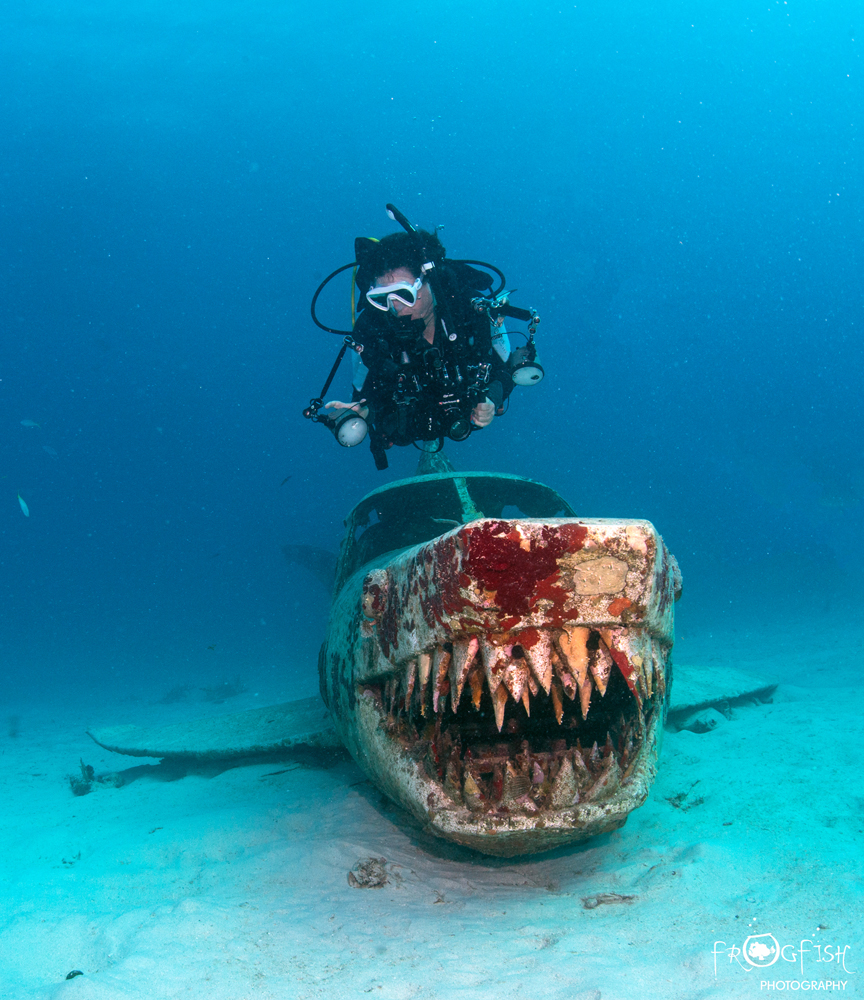
The BVI has plenty of artificial reefs, created from wrecks deliberately sunk. A couple of these are artistic creations from Beyond the Reef. The Willy T is a pirate themed party boat sunk in shallow water that now has skeletons of pirates duelling on the deck and going about their dastardly ways. It is a lot of fun and once you have had your fill, you can head up onto the shallow reef. Shark-plano is a series of three planes that were damaged in a hurricane, that have been turned into shark species and sunk. Both these sites are perfect for the diver that loves a bit of Instagram appeal!
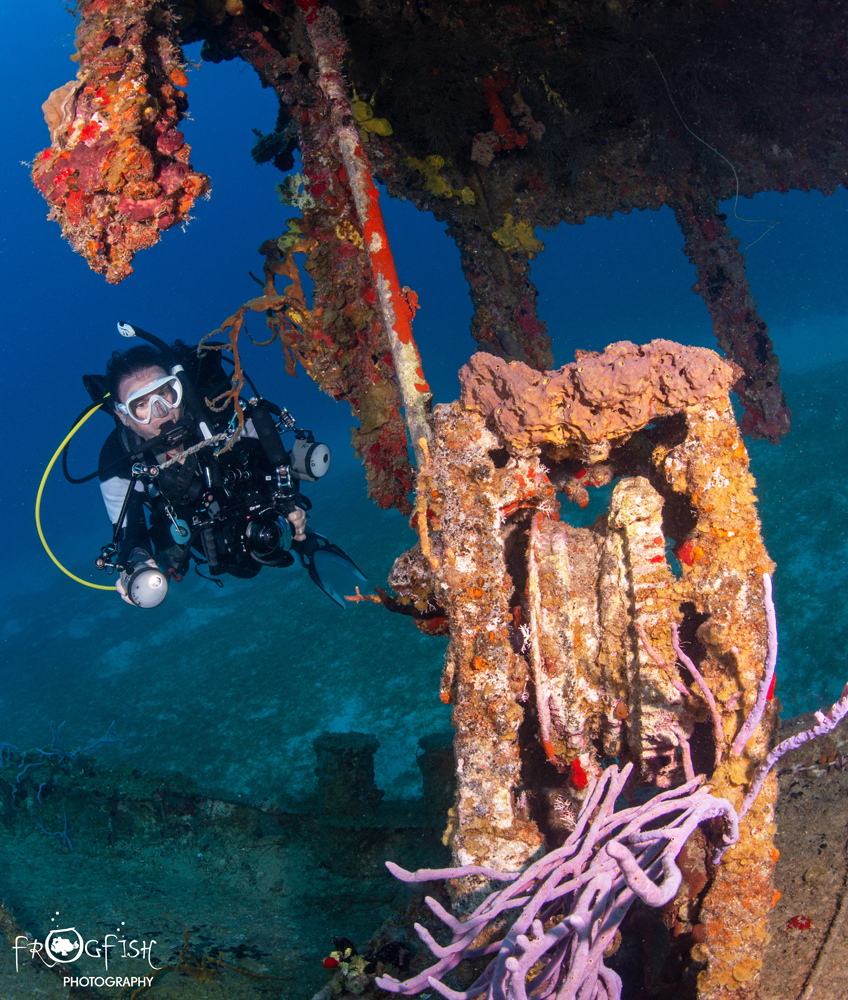
Wreck Alley has a series of three boats sunk to create a super dive site perfectly aligned for a single dive where you can explore them all. Moray eels can be seen free swimming along the decks, huge stingrays back the sandy seabed their home. Turtles cruise past as you make your way around and then up onto the reef for your safety stop.
On every dive we did we saw sharks which absolutely delighted us. The local dive shops seem to be particularly engaged in conserving the reefs, taking part in coral reef restoration, lionfish hunting, cleanups and logging their sightings. We were filled with positivity at the end of each day.
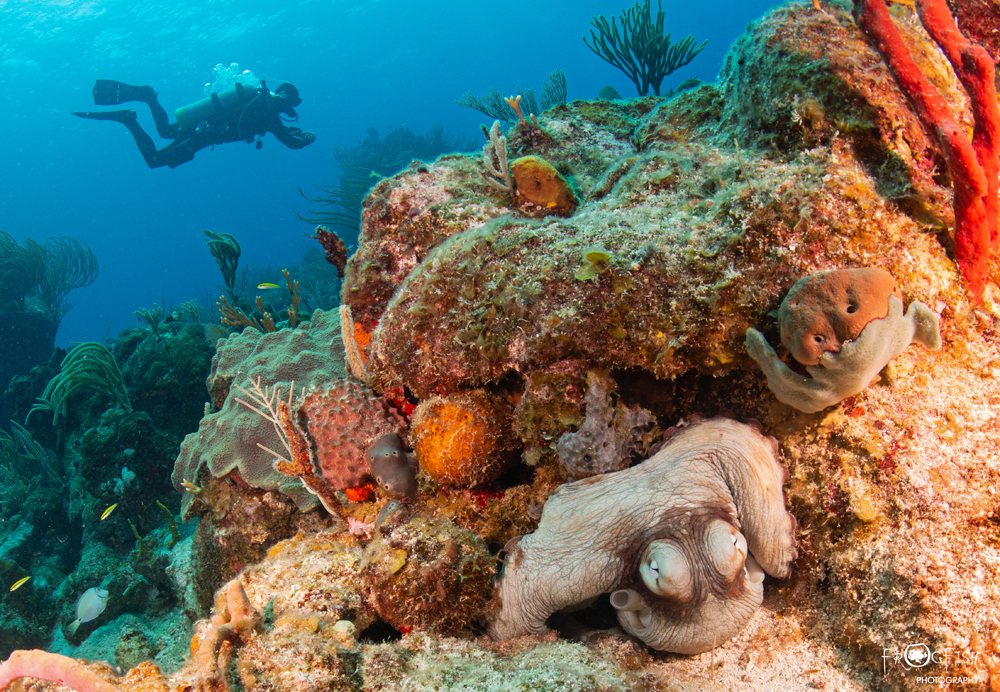
We hope that we can return to do it all again at BVI Wreck Week 2024!
Watch out for our full feature on BVI Wreck Week in the next issue of Dive Travel Adventures coming out in July.
For more information about BVI Wreck Week 2024 visit their website here.
Nick and Caroline were hosted by BVI Wreck Week
The Moorings provided their yacht for the week
Host Dive Centres:
Blogs
BVI Wreck Week – Diving the RMS Rhone (Part 2)
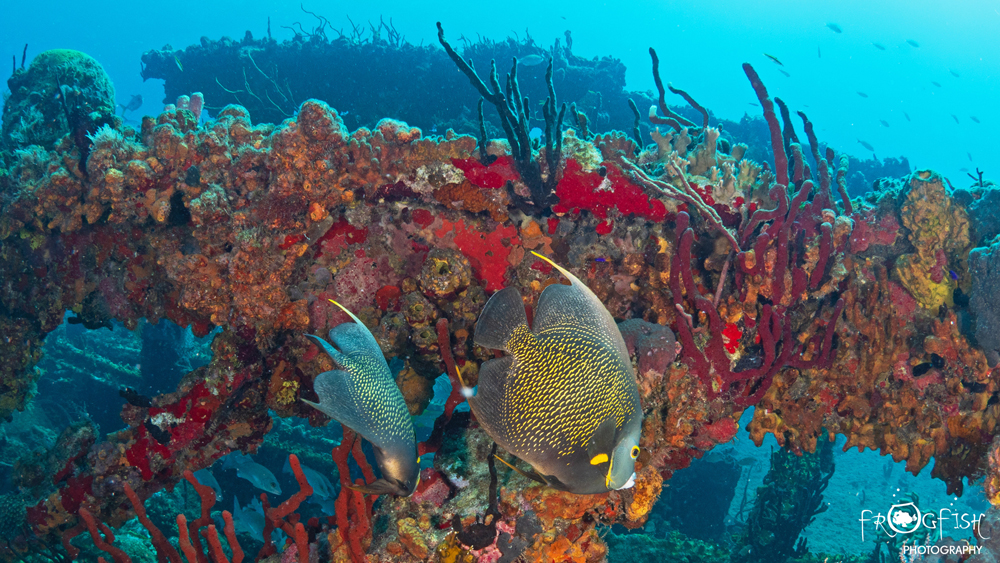
![]() You cannot talk about BVI Wreck Week, or diving in the British Virgin Islands, without spending some time on the jewel in their crown of wreck diving – the RMS Rhone. So this blog is going to be dedicated to a wreck dive that we were happy to dive three times on our trip and would have been happy to dive every day!
You cannot talk about BVI Wreck Week, or diving in the British Virgin Islands, without spending some time on the jewel in their crown of wreck diving – the RMS Rhone. So this blog is going to be dedicated to a wreck dive that we were happy to dive three times on our trip and would have been happy to dive every day!
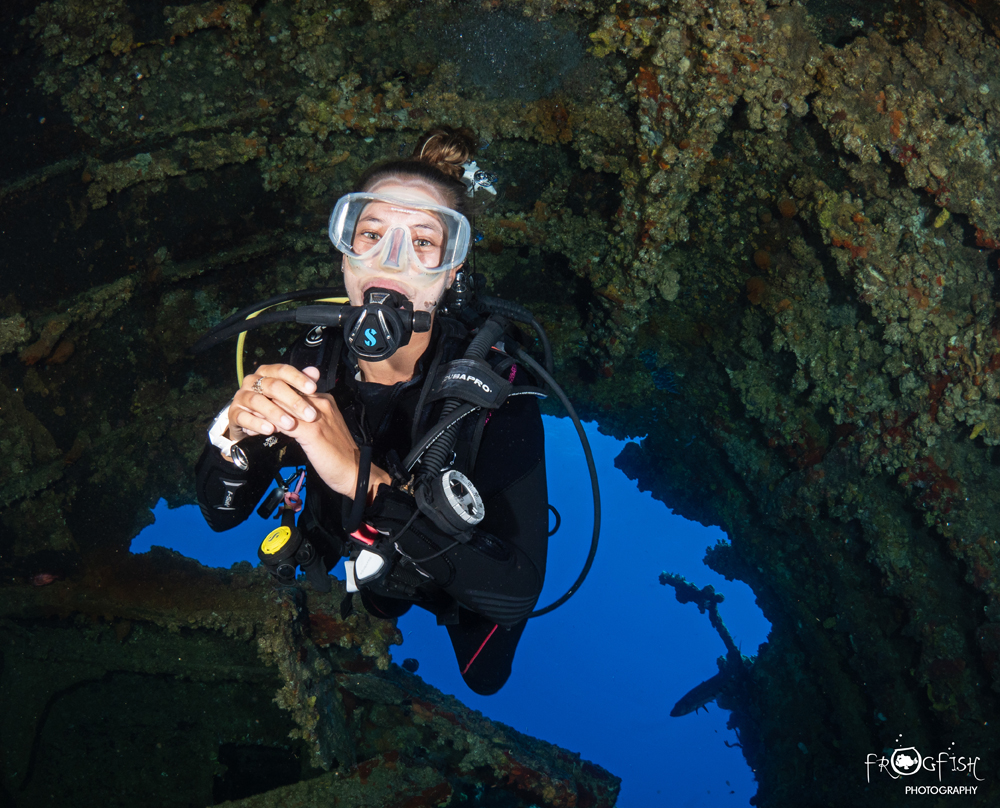
The RMS Rhone was a UK Royal Mail Ship wrecked off the coast of Salt Island on 29 October 1867 in a deadly hurricane. Now it is the most popular dive site in the region. The dive briefings for the site are filled with stories of the fate of the ship and some eye-opening tales since.
The wreck and surrounding area become the British Virgin Island’s first national marine park in 1980. Many of the underwater segments of the 1977 thriller The Deep were filmed on the Rhone, requiring actors Jacqueline Bisset, Nick Nolte and Robert Shaw to learn how to scuba dive.
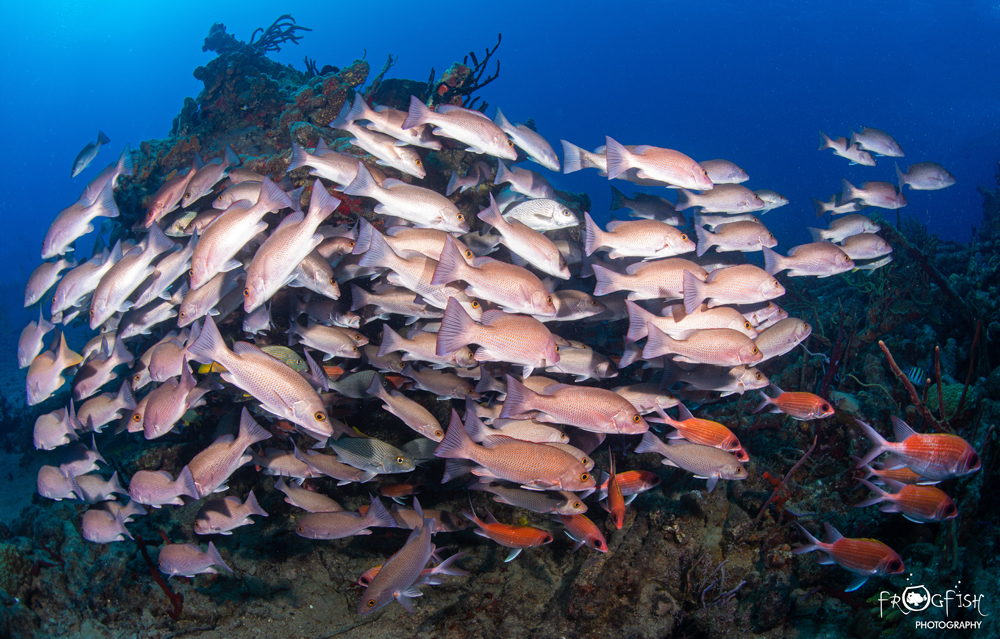
You’ll need at least two dives to fully experience the RMS Rhone. The ship split apart on sinking and the bow drifted just a little before sinking. The two halves are about 100 feet apart with the bow sitting in deeper water (around 25 meters / 80ft). So you are best to explore the bow fully on a single dive and then head to the stern on your second dive.

Whilst the history, artifacts and stories from the movies are absorbing, as soon as we got underwater to dive her, it was the incredible marine life that had us hooked. Two seahorses had made their home right at the bow of the wreck. Stingrays lay buried in the sandy sea bed. The structure is covered in colourful corals and sponges. Schools of fish occupy the overhangs and metal remains. We saw sharks on all three dives and were treated to a huge spotted eagle ray gliding over the wreck. Lobsters waved their antennae at us from every crevice. Life is everywhere you look on this dive.
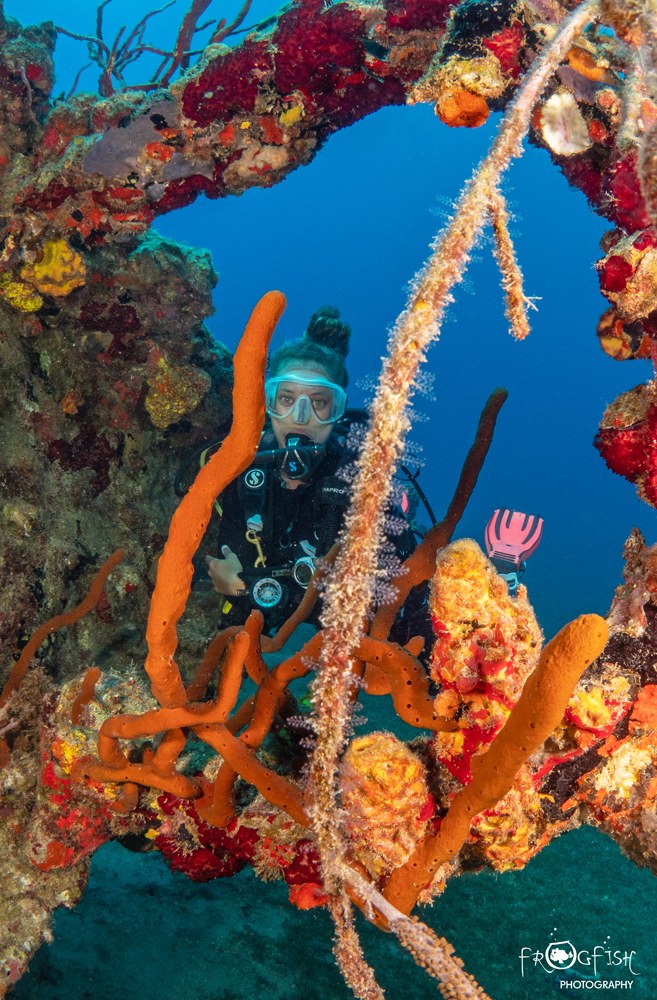
The marine park status has certainly ensured that this is one of the best wrecks we have dived in the Caribbean. Whilst we did not get the chance to do this – we bet it would make an awesome night dive.

Check out our next blog to find out more about the diving and watch out for our full feature in the next edition of Dive Travel Adventures Magazine in July!
For more information about BVI Wreck Week 2024 visit their website here.
Nick and Caroline were hosted by BVI Wreck Week
The Moorings provided their yacht for the week
Host Dive Centres:






